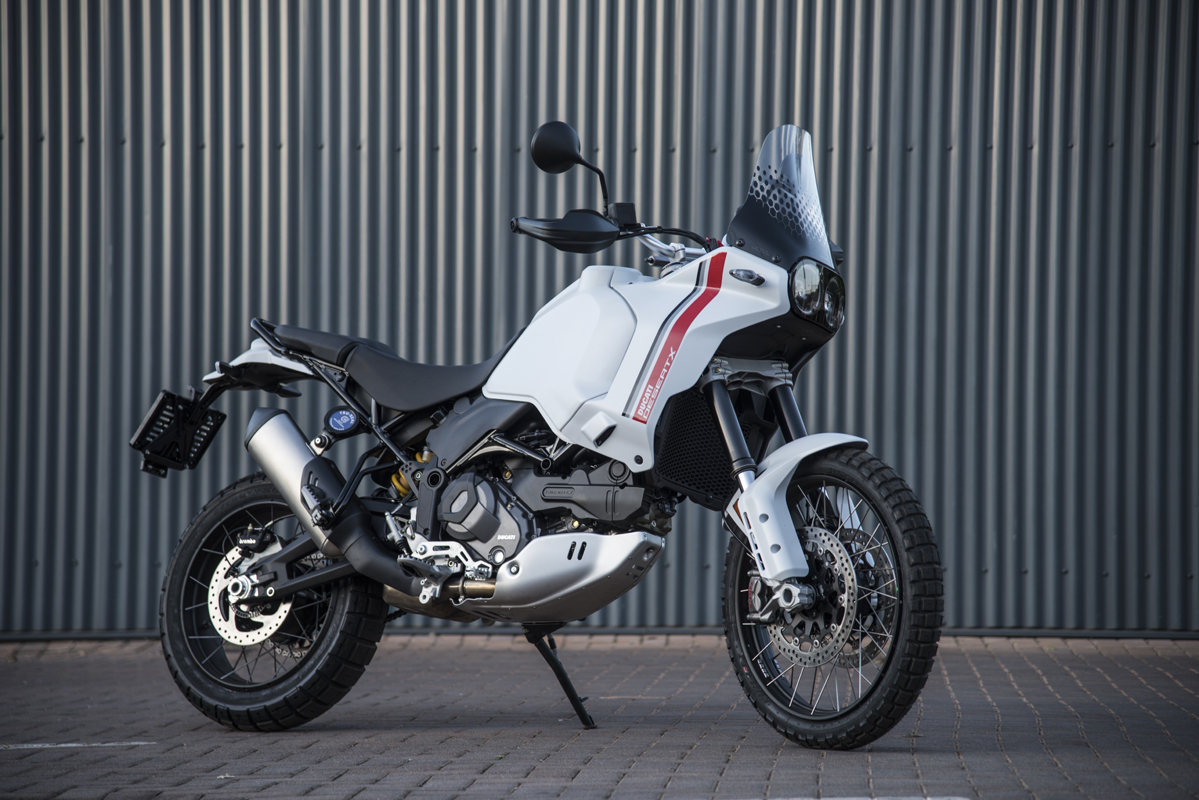
Shooting the breeze with Ducati’s Jos Matthysen and chatting bikes in general, he made the comment that all the mainline manufacturers “build good bikes”. And it is indeed so. Having ridden the latest and greatest since 2014 and owned a fair number of them, I totally concur. The Ducati DesertX is also a good bike, perhaps a truly excellent bike, but it is a ‘special’ bike too. Let me elaborate. Ducati is arguably building bikes with cutting-edge technology which is the equal of any other and perhaps better than most. They lead the charge in the ultimate expression of bike tech, MotoGP. It stands to reason then, that if they set their minds to building any genre of bike, they have the savvy to make it class-leading.
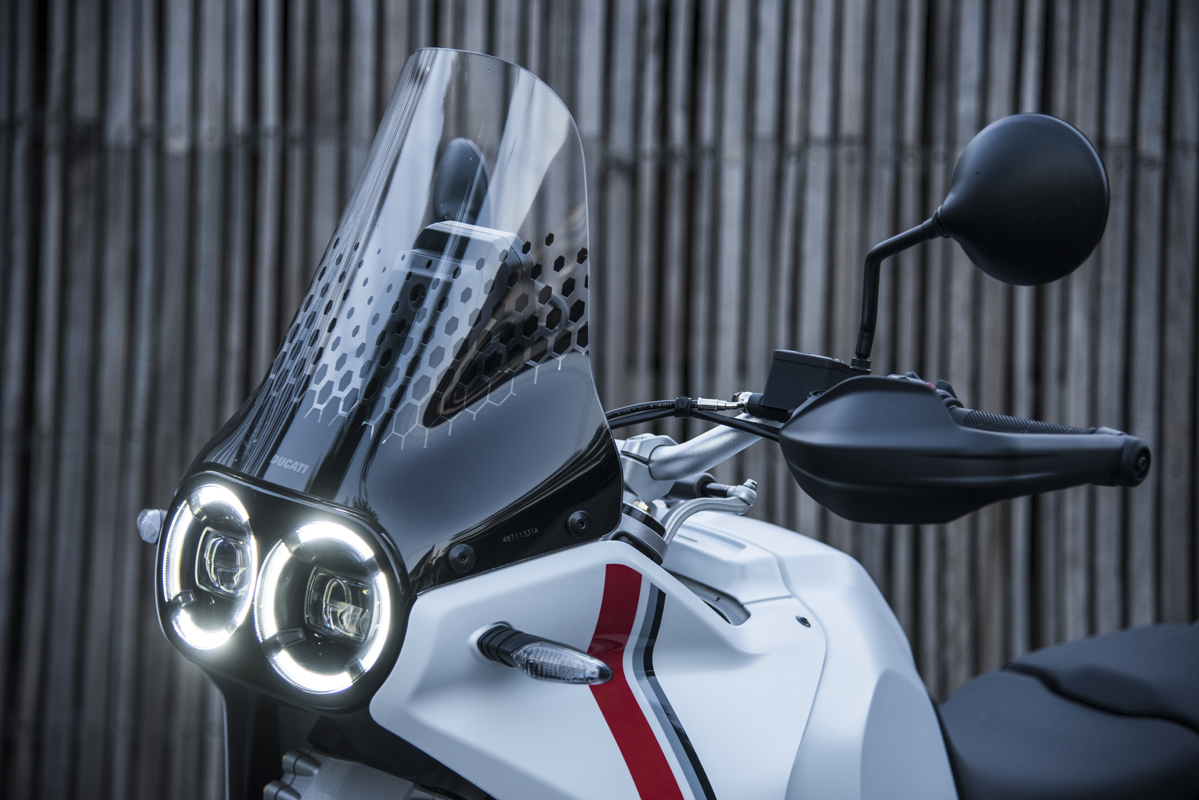
Now if you take that ability and infuse it with a huge dollop of Italian passion, then whip in some legendary Italian flair and styling and you have the recipe for something ‘special’. And so it is with their new DesertX. If any of you remember the Cagiva Dakar racer campaigned by Edi Oriole back in 1990 then you will totally get the DesertX’s styling cues. The 1990 Dakar-winning Cagiva Elefant, is the total inspiration for the Desert X. Remember that in 1990 Ducati was owned by Cagiva! The motor was the familiar Ducati 900 V-Twin that powered the first-generation M900 Monster. White with red Lucky Strike livery, the bike was an incredible, purpose-built machine.
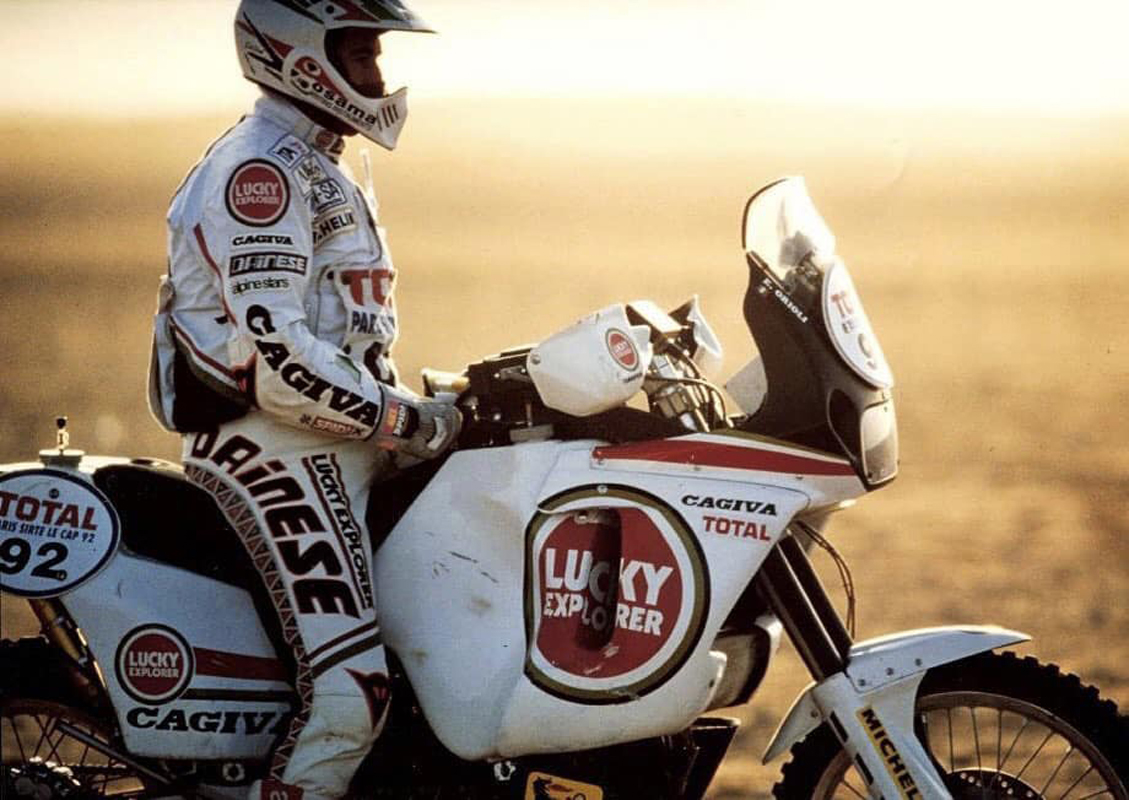
The Ducati DesertX is a modern take on that iconic Dakar-winning bike. The looks and styling pay homage to all that wonderful motorcycling history. Its talents are forged in the same crucible of fierce competition that still enthrals us to this day. So it should come as no surprise that this bike works as well as it does. It has a super talented Grand Pappy. I was gobsmacked when Jos handed me the keys to a brand-spanking new DesertX and said, “Dave, bring it back tomorrow and tell me what you think”. Struggling to get my helmet on over the smile that was trying to circumvent my face, I uttered a profuse “thank you” and was off like the proverbial sweaty sock. What a privilege to be the first person in SA, other than those blessed individuals who have bought the first batch, to sling a leg over a DesertX!
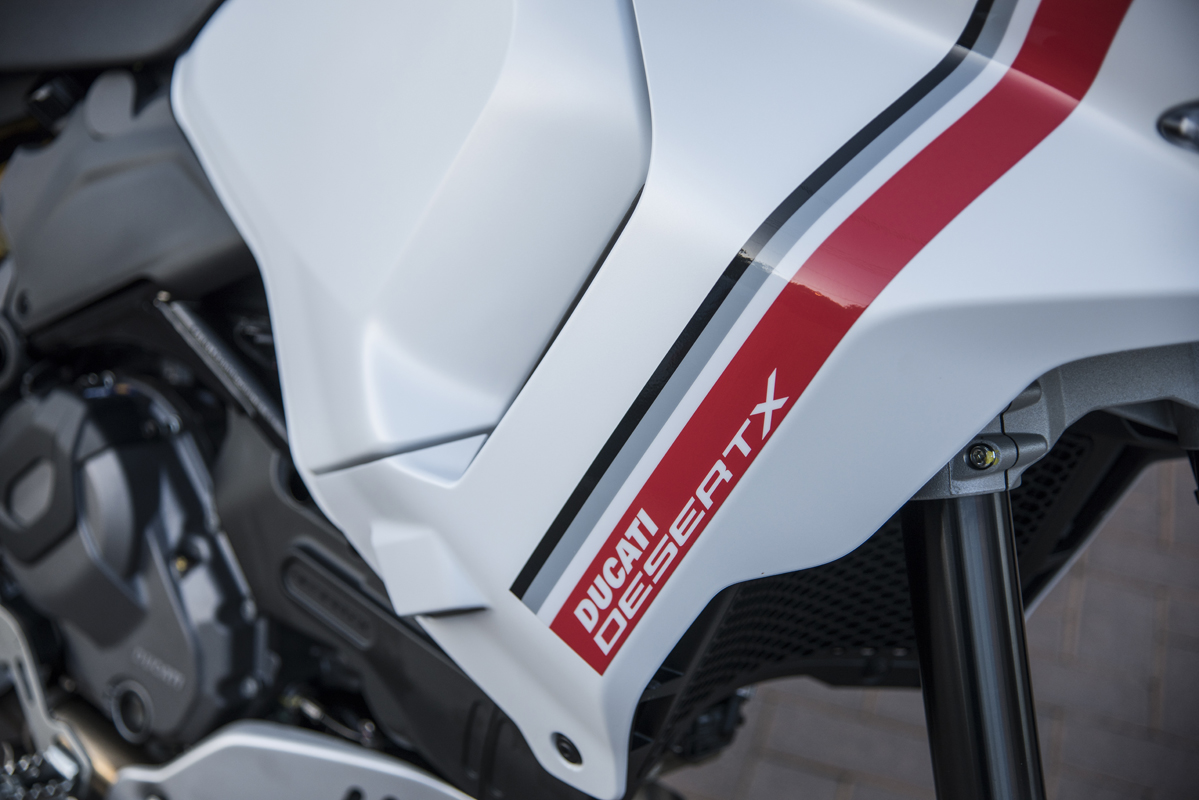
I am familiar with the tried and tested liquid-cooled 937cc Testastretta L-Twin desmo motor that powers a number of Ducati models. I enjoyed its power and torque immensely in my 950 Super Sport. With the lower gearing in this application, it has big shove right off the bottom. With literally 0 K’s on the clock when I rode away from World of Motorcycles, I short-shifted through the 6-speed gearbox.
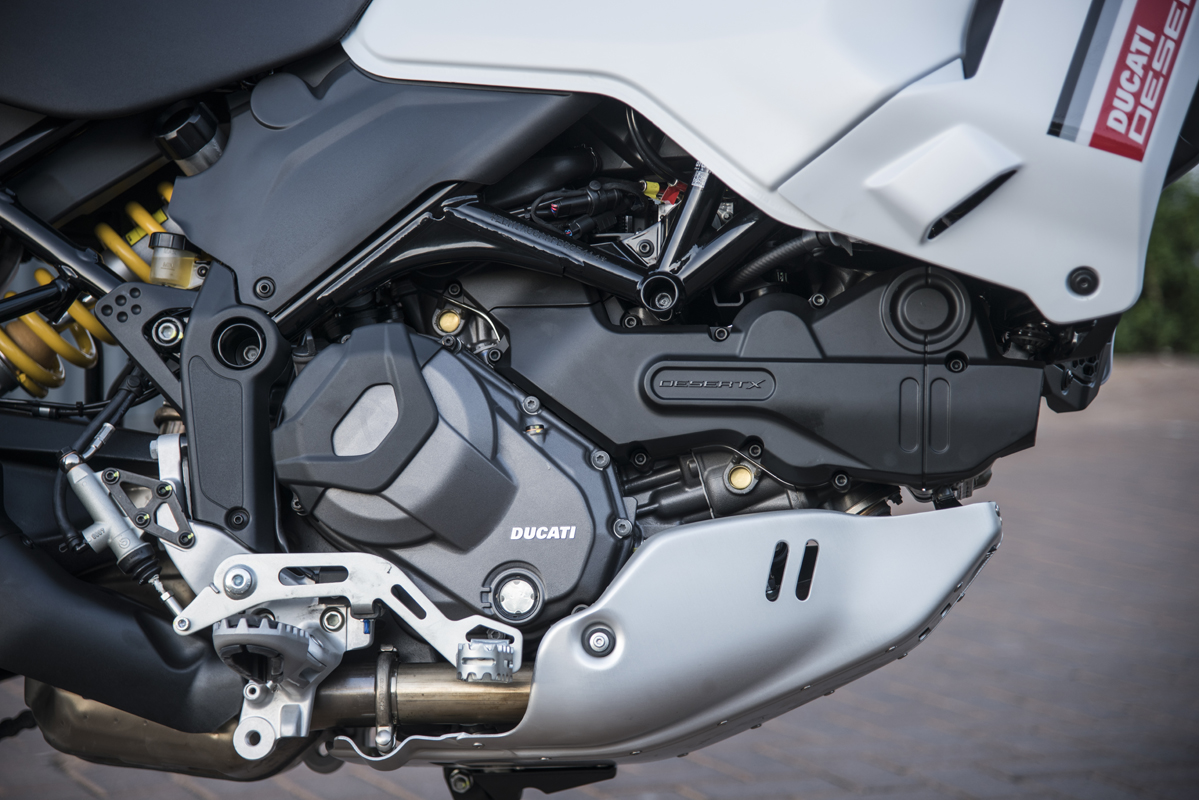
Turning onto the highway I familiarised myself with the X. At 6’3” I felt instantly at home with what are for me, perfect ergonomics. The handlebar bend and width are perfect and the stretch to the bars in relation to the pegs and seat is spot on. Seated or standing is for me, perfect. The seat is firm, initially feeling too firm, but riding for a couple of hours the next day I found it to have a firm memory foam which was quite cosseting to the old butt.
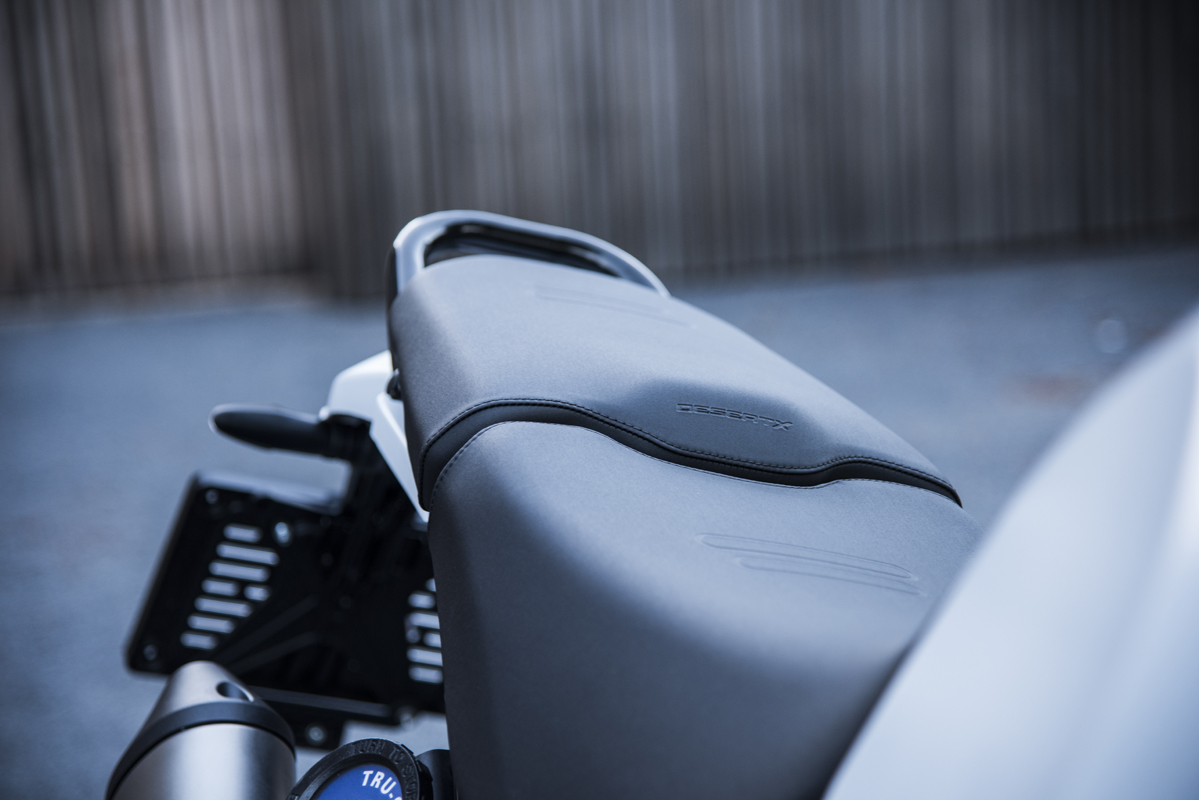
The motor has perhaps found, in the DesertX, its best application. Old Edi would have really smoked them with this beast! At 5,000 rpm the X is running at 112 km/h, which translates to a top whack of 224 km/h on the redline. The Dakar-winning Cagiva was good for 180, so there you go Dakar wannabees, how do you like them apples? 135 km/h would be my open road distance destroying speed, as this has you running at a punchy and super smooth 6,000 rpm. You are still a full 4,000 rpm from the redline. The pickup, opening the throttle further at this speed, is potent.
The screen is not adjustable but worked very well, taking all the windblast from my body without excessive wind noise in my helmet. I would rather do push-ups on a penknife than mess with those iconic Dakar looks by fitting another screen. Buy earplugs and suck it up cupcake.
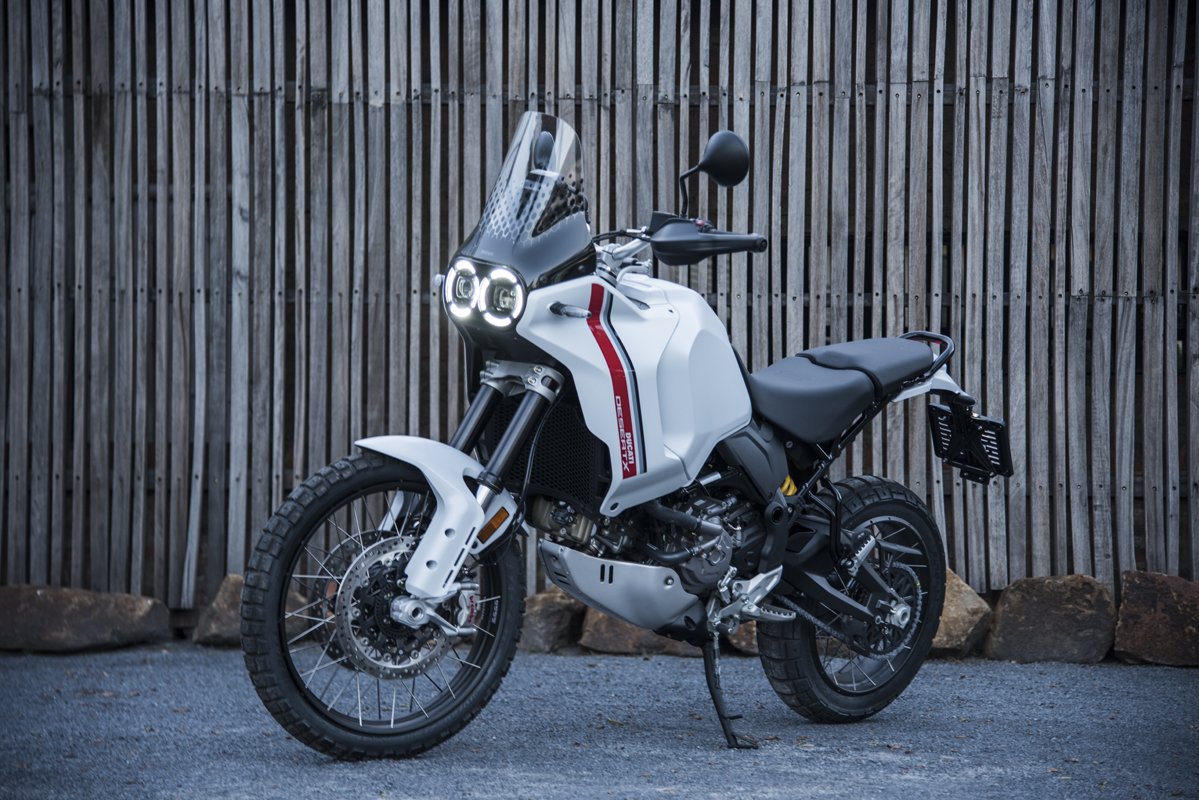
Chassis wise the X has it all. Steel trellis frame, fully adjustable Kayaba suspension with 46 mm front forks with 230 mm of firmly damped travel. The alloy swingarm gives 220 mm of travel. A 90/90×21 front wheel is perfectly suited to the 150/70×18 rear. Pirelli Scorpion Rally STRs are standard fitment. The bike feels immensely stable, which in turn translates to rider confidence. Bumpy tar, or the little bit of gravel that I subjected the bike to, could do nothing to ruffle its poise. Surely it was not all down to the standard steering damper?
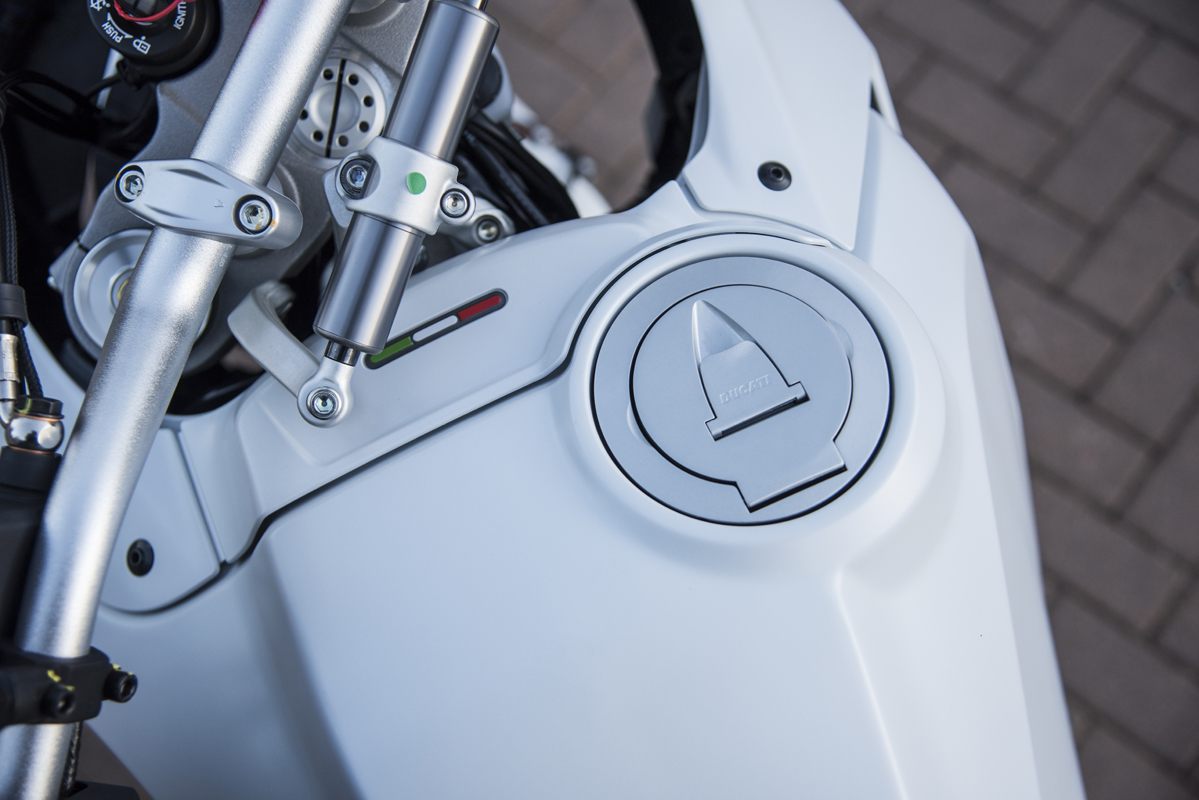
Further investigation revealed a 27.6-degree rake allied to a 1607 mm wheelbase. By way of comparison, the KTM 890 R, has a rake of 26.3 degrees and a wheelbase of 1529 mm. The more relaxed numbers on the Ducati translate to incredible stability, yet do not make it ponderous or slow steering. Flip, those Ities can build stuff right! This bike should punish deep sand like few others. The DesertX name is clearly meant to mean something!
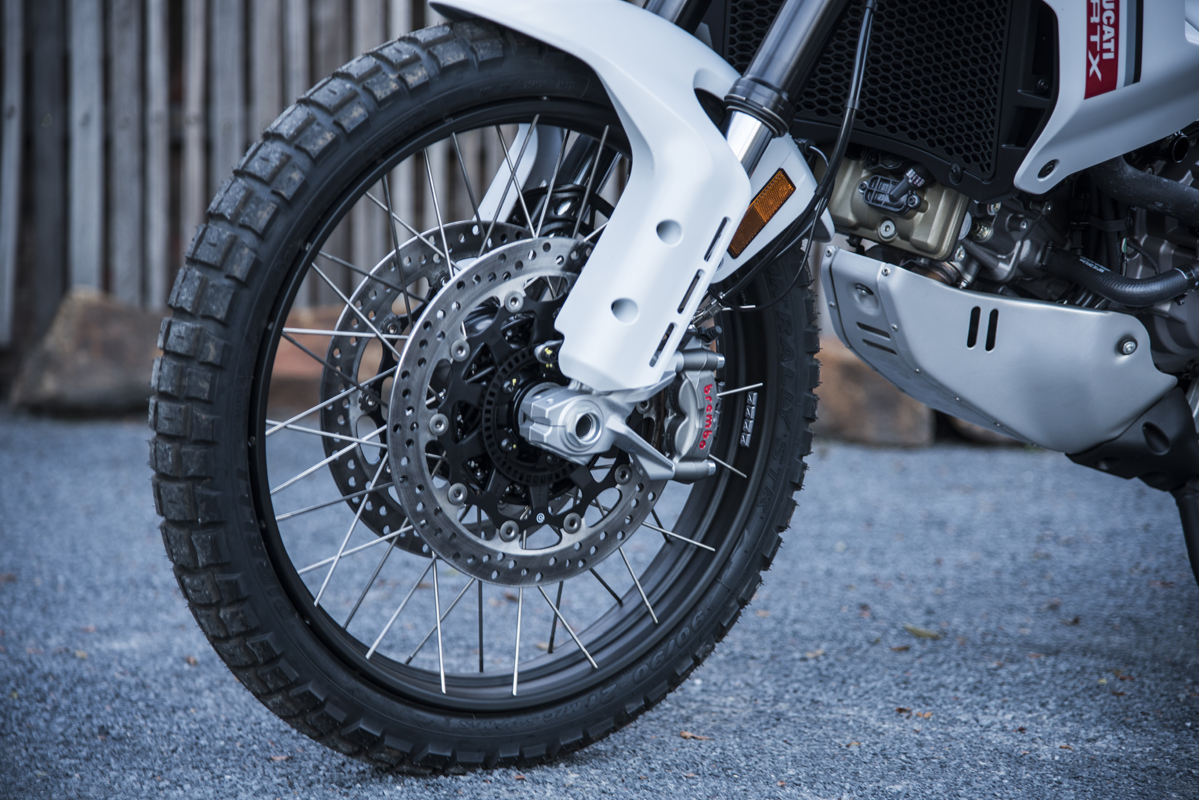
Brakes are Brembo monoblocks with 4 pistons mounted radially, chomping on 2×320 mm discs. The back wheel has a 265 mm disc with a 2-piston Brembo calliper. Braking is faultless. Fully fuelled, the Desert X weighs 223 kg. Pretty much in line with its middleweight competition. The tank contributes 21 kg of that weight given its 21L capacity. There are optional factory auxiliary fuel cells which fit on the back of the frame as with Edi’s Dakar Cagiva, which carry an extra 8 litres. Probably not necessary, but cool to have. Instrumentation is a 5,5” TFT display mounted vertically, like a Rally roadbook, which gives you absolutely all the info you require in a clear and legible fashion. Form and function in perfect harmony.
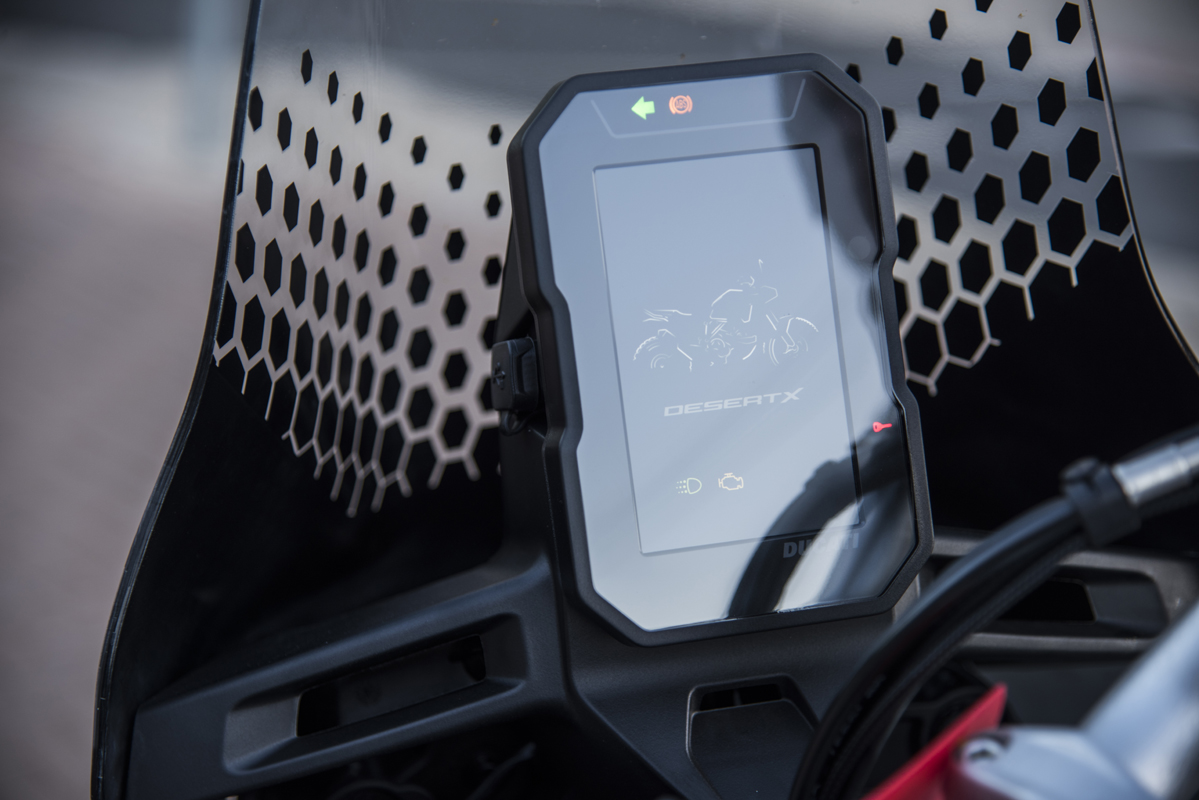
Ducati endow the X with all the tech mod cons and then some. Cruise control is standard. Ride modes, power modes, wheelie control, engine brake control, quick shifter, USB socket as well as a 12 v socket, the lot! And self-cancelling indicators. When you harness all this tech in a package that is all so very intuitive, it just has to translate into a good riding experience, and it does! Easing the DesertX away from the line on the smooth slipper clutch and then accelerating through the gears hooking the quick-shifter, with the chassis taught and controlled, will never become tiresome. Doing some tight, foot-up turns, in search of my next photo on narrow dirt roads, the DesertX displayed no top-heaviness and boasts a reasonably tight turning circle.
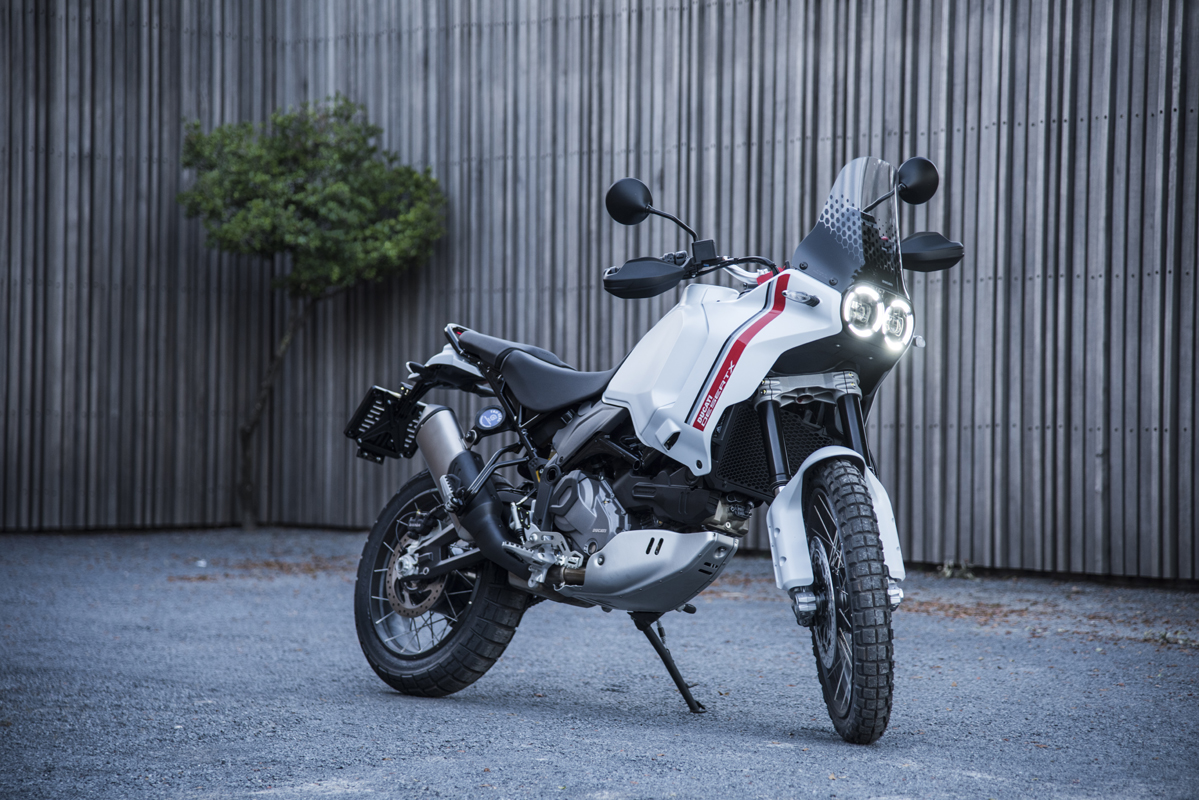
I made the comment on a post concerning my 950 SS that every time I rode the bike there was a sense of occasion. The X gives me the same feeling. Having spent a mere 250 k’s with the Ducati DesertX I can in no way comment with authority on its all-round prowess, but respected journalists worldwide who have thoroughly put it through its paces, have raved about it. I personally know of a prominent ex-national level enduro rider who bought one for dirt hooning and subsequently sold his KTM 890 R, as he felt that the X was all the adventure bike that he needs. Fair praise from one who knows!
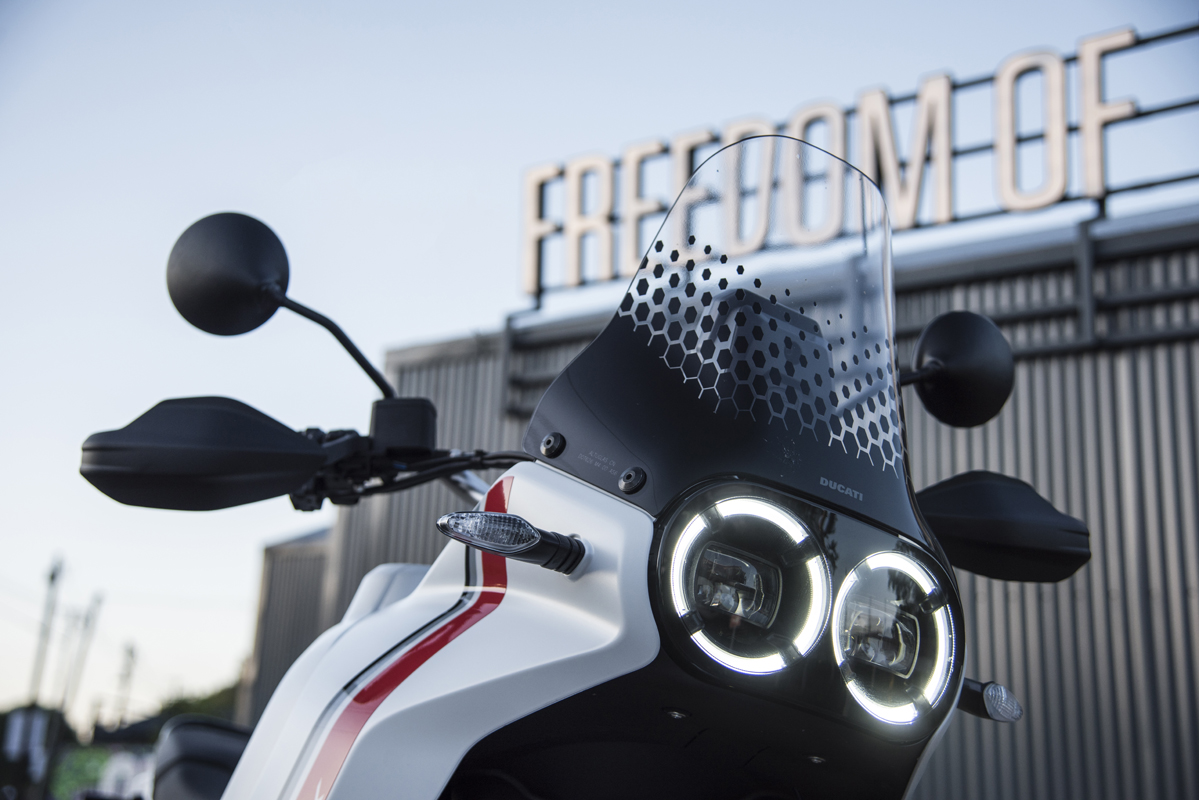
If the rumours about no more petrol-powered bikes after 2030 have even a modicum of truth, the Ducati DesertX may just be the one bike to buy. It is a superb performer on the street, and possibly even better offroad. It will stand as a reminder of the iconic ’90s when men were men and bikes were proper! When the world was happy to advertise cigarette brands on racing machines, confident that people were savvy enough to decide for themselves as to whether they would indulge or not. Today we have spawned a highly confused generation, God help us!
When my riding days are over, thanks to brain-dead bureaucrats, I will be happy to park my DesertX in my lounge and just savour its beauty and all-round awesomeness and reminisce about those wonderful days that were. To be able to buy this much heritage in an exotic bike that is so functionally superb, for a mere R271,000, [while stocks last] is an absolute steal! The Ducati DesertX is a truly special bike indeed!
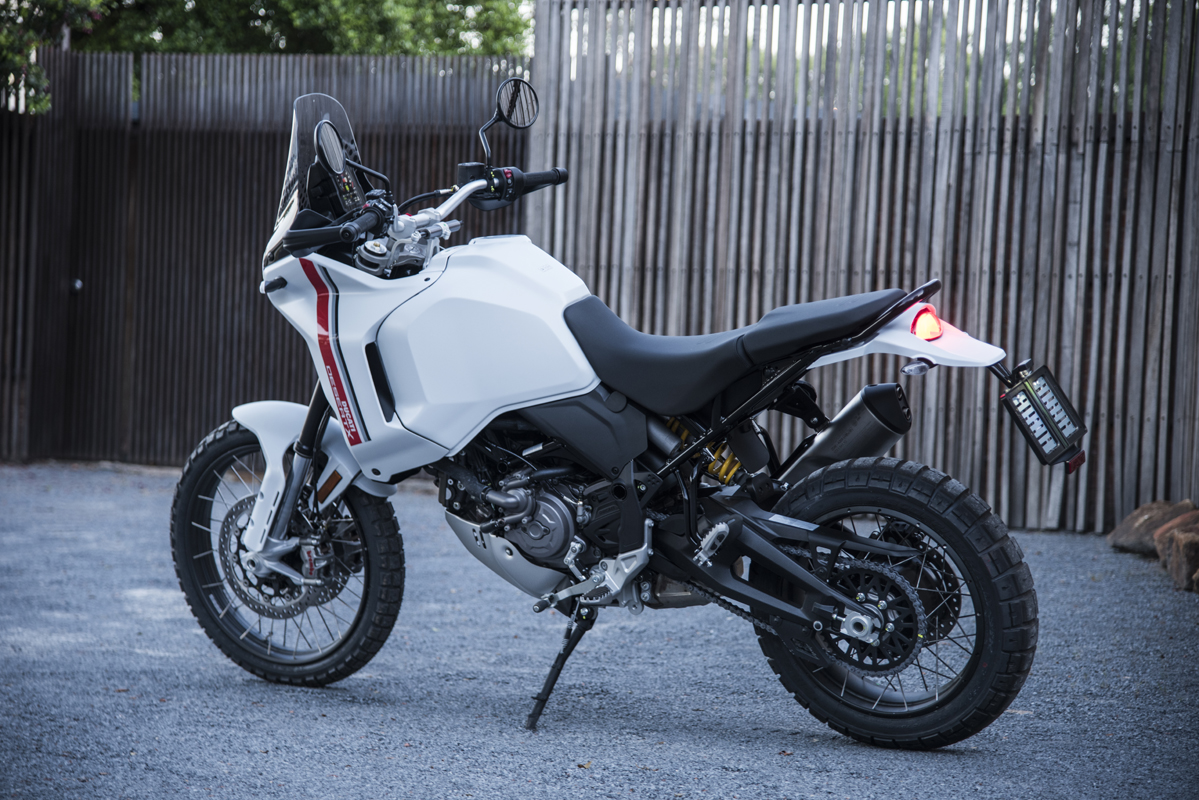
Ducati DesertX
For more information on the bike that we tested in this article, click on the link below…




